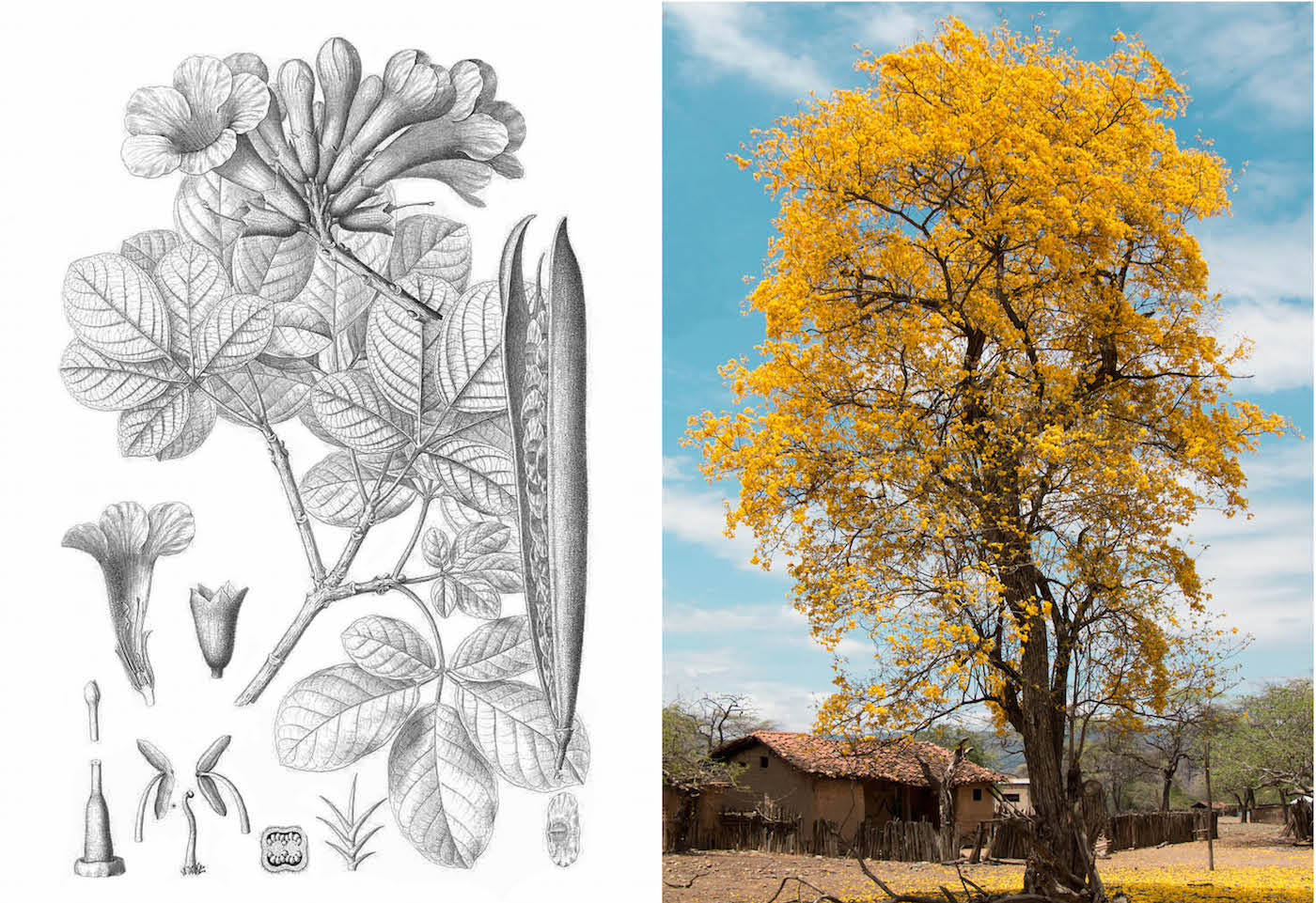The flowering of Ecuador's
Guayacan trees
The flowering of the Yellow Guayacan is a phenomenon that draws thousands of tourists to southern Ecuador to contemplate the yellow blossoming at the end of January and early February. In January 2015, UNESCO designated 500,000 hectares of Ecuadorian forest in the province of Loja containing Guayacan trees a biosphere reserve.

These hardwood trees can grow up to 30 meters in height and two meters in diameter. The tree’s silhouette is wide, oval and globelike. The bark’s texture is rough. The tree crown diameter varies between three and four meters. It has palm-shaped leaves, big bell-shaped flowers, and cube-shaped fruits. These trees are yellow during the blooming season, dark brown in the defoliation season, and green when foliage is complete.

The most suitable ecological requirements for Guayacan seeds are an altitude from zero to 1,500 meters above sea level, average annual temperatures between 22 and 26 degrees Celsius, a precipitation higher that 2,000 millimeters, and fertile and well-drained soil.

Yellow Guayacan is the common name of many tree species belonging to the Bignoniaceae family and to the Porlieria, Caesalpina, Tabebuia and Guaiacum genders that grow in forests from Mexico to Peru.

Latin American governments and citizens must take care of all their natural resources to encourage sustainable development with ecological, economic and social equilibrium.
Andrés López-Cortés is a molecular biologist and researcher at the Biodmedical Research Institute at the Universidad de las Américas in Quito, Ecuador. Follow him on Twitter here.
Ángela León Cáceres is currently working in conservation for the NGO Tropical Herping. She also works for the Ecuadorian Ministry of Public Health on international cooperation. Follow her on Twitter here.